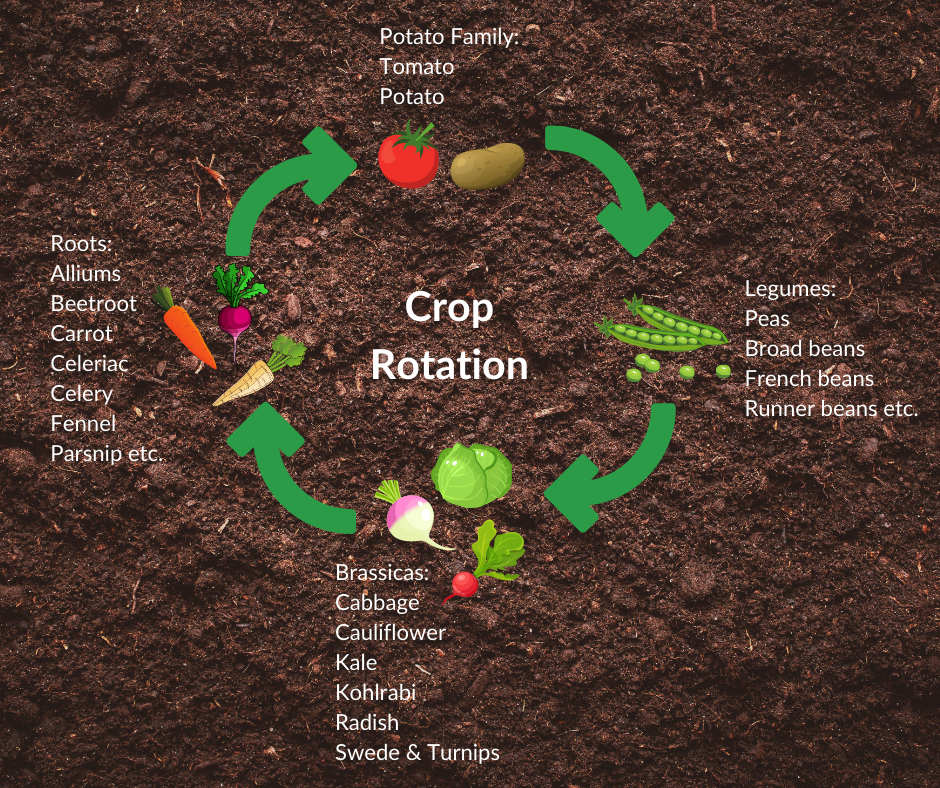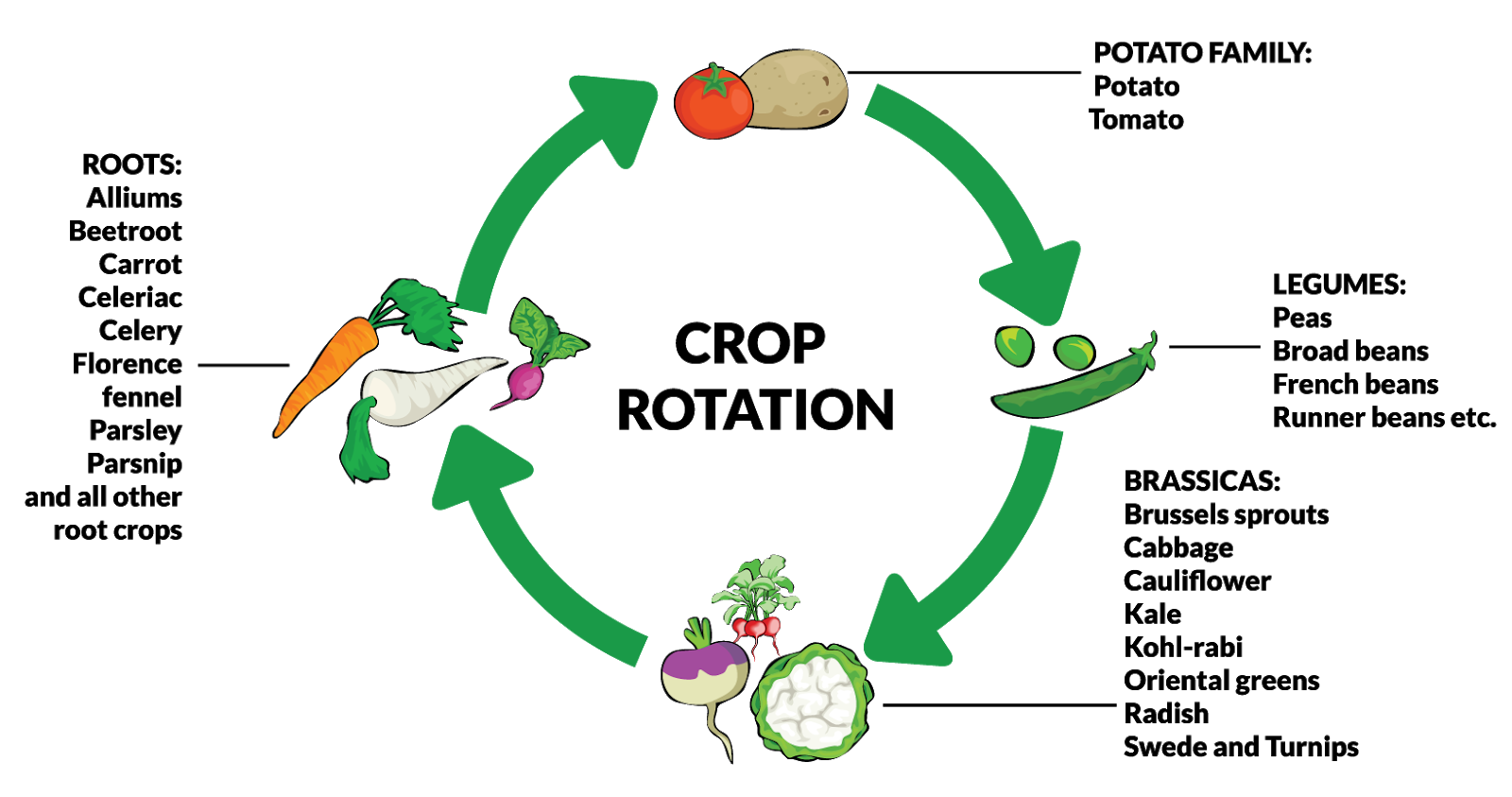Unlock Your Garden’s Potential: Expert Crop Rotation Tips for Thriving Harvests

Few things in gardening are as quietly transformative as crop rotation. If you’ve ever watched a promising tomato patch dwindle into a spindly, blight-stricken stand (been there), or puzzled over why your carrots get smaller each year despite generous composting—trust me, you’re not alone. Fifteen years ago, I was convinced that good soil and diligent watering were all it took. My first multi-year experiment proved me wrong: yields dropped, diseases flourished, and my frustration grew faster than my beans.

That all changed when I stopped treating crop rotation like an afterthought and started using it as the backbone of my growing strategy. Over countless seasons—testing on everything from cramped urban plots to sprawling acreages—I’ve distilled the practice down to what works in real gardens, for real people. This is not a regurgitated listicle; it’s a hard-earned guide packed with firsthand failures, surprising wins, and tips you probably won’t hear at your average gardening seminar.
Let’s strip away the hype and get into how—and why—crop rotation can become your single most valuable tool, whether you’re wrangling three raised beds or managing a patchwork of leased farm fields.
1. Crop Rotation Demystified: Why This Isn’t Optional
Picture this: Soil isn’t just “dirt”—it’s alive. Each crop you grow acts like a guest at a dinner party: some devour the main course (nitrogen), others bring a dish to share (legumes adding nutrients), while some barely nibble at all (root crops). Imagine inviting the same hungry friends year after year; eventually, the pantry runs dry and arguments break out—in plant terms: stunted growth and disease.
The real magic of crop rotation? You orchestrate who sits where each season, balancing appetites with generosity and shaking up any freeloaders (pests) who think they own the place.
The Short Version:
- Rotate families, not just individual crops.
- Track placements every year.
- Aim for 3–5 year cycles—the longer the gap between repeats, the better.
2. Real-World Foundation: The Four Laws of Effective Rotation
After poring over farm records from Oregon to Oxfordshire—and plenty of my own missteps—I’ve found four universal truths underpinning successful rotations:
1. Don’t Let Relatives Follow Each Other
Pathogens are loyal—they love continuity. Swapping tomatoes for potatoes is nearly pointless since both are nightshades (Solanaceae). Always leapfrog between unrelated plant families.
2. Feed Your Soil What It Needs Next
Every season leaves a different “nutrient fingerprint.” Heavy feeders suck up nitrogen; legumes refill it; roots hardly make a dent but loosen structure. Match new crops to what last year left behind—not what looks best on seed packets.
3. Disrupt Pest Expectations
Soil-dwelling bugs memorize locations like elephants remember waterholes. Break their routines by moving their favorite foods elsewhere before they hatch another generation.

4. Observe First—Adjust Later
No textbook plan survives contact with unpredictable weather or stubborn local blights! Keep records and treat your garden like an ongoing science project—not a static formula.
In my second full rotation cycle, I discovered that onions performed dramatically better after peas than after lettuce—a switch that made zero sense until I noticed fewer root maggots in pea aftermath beds.
3. Building Your Personal Rotation Plan: A Step-by-Step Experienced Approach
Forget generic templates—I recommend this approach because I’ve watched it save time and heartbreak repeatedly:
Step One: Physically Walk Your Plot
Stand outside with coffee in hand (or thermos if it's February). Imagine dividing your space into zones—even if it's just imaginary lines across lawn or patio pots. On larger fields, use stakes or twine to visualize blocks. There’s no substitute for seeing sunlight patterns and access points up close!
Step Two: List YOUR Core Crops by Family
Don’t bother with families you don’t eat! My friend Dave once spent two years rotating rutabagas he couldn’t stand eating simply because he saw it online. Identify only what matters for your kitchen or market table:
| Family | Examples |
|---|---|
| Solanaceae | Tomato, pepper |
| Brassicaceae | Broccoli, kale |
| Fabaceae | Beans, peas |
| Alliaceae | Onion, garlic |
| Cucurbitaceae | Cucumber, squash |
| Umbellifers | Carrot, parsley |
If unsure about something obscure (“Is Swiss chard related to spinach?”), check one minute on The Royal Horticultural Society database; it’ll save years of confusion later!
Step Three: Start Sprawling Notes—Not Digital Perfection Yet!
I used to draw elaborate colored maps in Excel…then lose track every summer amid weeding chaos.
Now? A cheap notebook or phone pic does wonders—a quick sketch per bed/zone each spring labeled “Year X – Nightshades,” etc., will outlast any fancy app when things get busy.
Step Four: Decide On Your Cycle Length Based On Space AND Risk Level
My rule:
- Tiny urban plot: At least alternate two unrelated groups annually.
- Three-bed backyard: Aim for three-year gap between same-family returns.
- Four+ beds/blocks: Shoot for four-year cycles minimum; five is gold-standard if disease pressure is high.
How do you know if risk is high? Ask around locally—or log which pests/diseases have hit hardest each July/August.
4. Beyond Basics: Battle-Tested Tactics Most Guides Miss
Too many resources gloss over these realities—the real difference-makers revealed through trial (and error):

A) Embrace Green Manure “Rest” Years Early On
The first time I sowed crimson clover instead of more veggies (“wasting” prime space!), neighbors chuckled…until they saw bean plants twice as robust next spring where clover had fixed nitrogen all winter.
Green manures like rye or vetch aren’t placeholders—they’re essential tools that can cut synthetic fertilizer needs by up to half within two cycles.
B) Don’t Underestimate Microclimate Tweaks
One windy May in Nebraska taught me onions thrive where brassicas failed miserably due to windburn—even within ten yards! Adjust plans based on sun pockets/wind shadows/pooling water unique to your site—not just family names on paper.
C) Double Down On Record Keeping When Problems Strike
If blight or beetles show up despite good rotations:
- Mark those beds “high alert.”
- Extend intervals before replanting susceptible family there (four+ years).
- Note exact dates/outcomes—you’ll spot subtle patterns only visible across seasons (“Clubroot always strikes Block C post-rainy springs…”).
5. Classic Pitfalls & How Experts Sidestep Them
Let me spare you some lessons learned the hard way:
Mistake #1 — Focusing Solely On Nutrients
Rotating for fertility alone misses pest/disease cycles entirely! Even if soil tests show solid nutrition, pathogens linger unless hosts change family regularly.
Mistake #2 — Letting Perennials Derail Annual Plans
Asparagus demands its permanent spot—but plan annual rotations around these anchors rather than trying futilely to rotate them out with annuals nearby (I once lost an entire crop row squeezing cabbage too close).
Mistake #3 — Giving Up After Losing Track
Lost notebooks happen! Old phone photos from planting day have rescued more than one client’s memory—and mine too—when fall rolls around.
Mistake #4 — Blindly Following Internet Templates
Your garden isn’t Iowa cornfields nor French potagers if conditions differ wildly…
Try new groupings based on actual results—not tradition alone—and keep evolving!
6. Scaling Up & Adapting Advanced Strategies For Any Situation
As plots expand or ambitions grow (CSA growers take note!), layering complexity pays compounding dividends:

Integrate Cover Crops At Every Opportunity
If you can sneak even six weeks’ worth of buckwheat before fall planting—or sow oats under spent tomatoes—you’ll marvel at reduced weeds next season without extra labor later.
Cost breakdown: One pound of organic buckwheat seed covers ~500 sq ft for under $5—a bargain compared to weed fabric or extra mulch!
Trial Intercropping Inside Rotations
The trickiest but most rewarding twist:
Plant basil among tomatoes early (classic companion), then follow both with snap beans late summer—all while keeping careful records so next year’s grouping doesn’t double-back on itself too soon.
When done right? You’ll squeeze two full crops from one bed without breaking rotation discipline—a secret sauce among intensive urban growers I’ve coached in Chicago community gardens since 2017.
7. Trusted Tools Of The Trade
Over years juggling spreadsheets and mud-splattered jotters side by side:
- Analog: Waterproof field notebooks + Sharpie labels = foolproof backup when batteries die during August heatwaves;
- Digital: GrowVeg shines for multi-season drag-and-drop planning; Google Sheets beats expensive software for custom logs shared across farming partners;
- Hybrid tip: Take panoramic smartphone shots every major planting—save them into an album titled “2024 Beds.” When memory fails mid-winter? One scroll brings clarity!
Don’t let technology distract from observation—the best growers still walk their land regularly during coffee breaks…
8. In The Trenches: Real Stories From Seasoned Rotators
Anna’s Raised Beds (Pacific Northwest)
After battling persistent clubroot in brassicas three years running—even after rotating—she extended her interval between repeats from three to five years per bed…and finally broke the disease cycle by incorporating mustard cover crops in off-years (“smelled spicy when tilling!”). Her broccoli now grows taller than her fence line most summers—a turnaround she attributes directly to making rotation intervals non-negotiable despite temptation for quick harvests elsewhere.
Jason’s Market Garden (Ontario)
Swapped out complicated charts for color-coded popsicle sticks marking beds by family each spring (“yellow = legumes”). He then rotates sticks forward annually so even seasonal volunteers can follow his system without confusion—increasing sales consistency as disease losses plummeted by half.
Urban Plot Cooperative (Manchester UK)
Shared WhatsApp logs allow nine members to flag pest outbreaks instantly—and adapt next rotations communally rather than repeating past mistakes independently (“no more blaming neighbor’s onions!”). Disease incidents fell off sharply after season three.
These aren’t flukes—they’re everyday proof that practical recordkeeping plus thoughtful adaptation trumps theory every time.

9. Troubleshooting Guide For Tough Situations
When textbook rotation isn’t enough…
Tomatoes still getting blight yearly?
- Push nightshade return intervals beyond four years if possible;
- Remove all debris post-harvest;
- Mulch paths heavily between rows (mycorrhizal fungi prefer less disturbance!);
- Source disease-resistant varieties specific to your area;
Limited space?
- Focus on never repeating same-family consecutively;
- Supplement with green manure where possible—even small patches help;
Persistent fungal soil issues?
- Test solarization using clear plastic during hottest month;
- Rotate in strong biofumigant cover crops like mustard;
Remember—in chronic trouble spots sometimes radical change is healthiest: rest problematic beds completely one cycle (“fallow”); move containers altogether if needed; don’t get stuck repeating misery out of habit!
10. Your Practical Crop Rotation Blueprint For Next Season
Here’s exactly how I’d coach someone starting fresh—with tweaks gained from dozens of hands-on case studies:
- Sketch/divide at least three distinct sections/zones/containers now—even rough chalk lines work!
- Assign core planned crops by family, not species.
- Map current allocation visually—use markers/stickers/photos.
- Draft next season's plan underneath—in color or bold marker—for instant reference.
- Save/print/share these layouts digitally OR tack physical copies inside shed/kitchen door.
- Make short notes post-harvest about standout problems/successes (“peas thrived here despite drought!”).
- Repeat yearly; add/remix groups as site/maturity evolve.
Consistency creates resilience—it really does trump initial perfection.
Long-Term Growth: Becoming A Savvy Rotator
Mastery isn’t about memorizing textbook schemes—it comes from watching what happens under your sun and responding accordingly every single year:
- Attend local demo gardens/farm walks whenever possible—you’ll learn more asking practitioners about their worst mistakes than reading glossy books,
- Test advanced strategies slowly—as confidence grows,
- Exchange data/results with peers online/offline,
- Accept that unpredictability always wins some battles…but observation turns losses into long-term gains,
A final word of encouragement—from someone who once thought “rotation” was old-fashioned folklore until firsthand experience proved otherwise:
Every garden tells its own story through rotation cycles…and yours will only get richer as seasons pass!
Keep those notes handy—and trust your eyes above anyone else’s charts.
Happy rotating—the health of next year’s soil depends on today’s choices!



